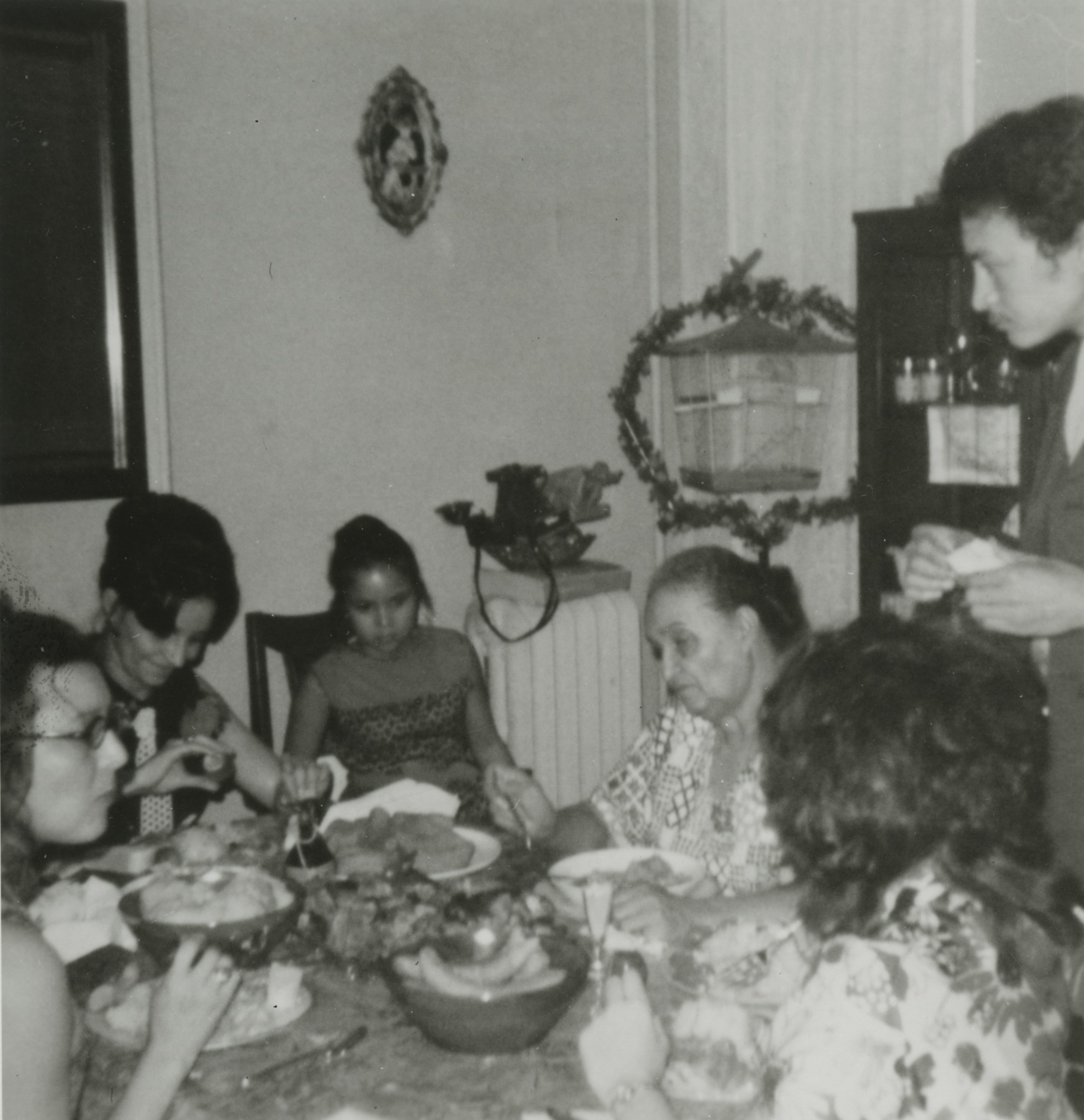1929: Immigration Laws Expand Opportunities
 |
|
The Negron family enjoys Christmas dinner together. Image from the Historical Society of Pennsylvania. |
The age of mass immigration into the United States ended after World War I when the 1924 National Origins Act was passed. This legislation established an annual quota of immigrants allowed entrance into the country, a number which was decided based upon nationality: each country was assigned a yearly quota based on the number of persons from that nation who were already living in the U.S. In 1924, the annual quota for immigrants from all countries was set at 165,000; in 1929, that quota was decreased to 150,000. Additionally, later that year, the US government turned their attention toward Mexican repatriation, establishing a program with the goal of "coercing" Mexican immigrants to return to their home country. This goal was accomplished through immigration raids and threats of penalties for those living in the U.S. who could not prove legal citizenship.
Though the situation was gloomy for other nationalities, Puerto Ricans benefitted from the new legislation. A decade had passed since the Jones Act of 1917, which extended U.S. citizenship to Puerto Ricans, resulting in a large number of islanders migrating to the mainland to pursue better economic opportunities. In the 1920s, American-based manufacturing companies, at a loss for cheap manual labor thanks to immigration restrictions, began recruiting Puerto Ricans to fill their empty positions.
The effects of World War I, the Jones Act, and the Immigration Act of 1924 on the Puerto Rican population are quantifiable. In 1910, there were only about 2,000 Puerto Ricans living on the mainland, with the majority of that number settling in New York City. In 1920, after the passage of the Jones Act, over 11,000 islanders had settled on the mainland. This number only continued to grow after the passage of the Immigration Act of 1924: in 1930, over 50,000 Puerto Ricans lived in the mainland U.S.
Written by McKenna Britton, a public historian living and learning in Philadelphia.
See the Spanish version of this page here.
For more context on this event, see the Politics page.
Further Resources
- Puerto Rican Migration Before World War II, Lehman College, Department of Latin American and Puerto Rican Studies.
Art: Community Feedback Connections: Lucecita
Leity Rogriguez Largo Response: "It's a message to us immigrants... It's very powerful because we always take our history with us here, when we're in the United States. And, whatever happens, if you go to another country, that story follows you."
